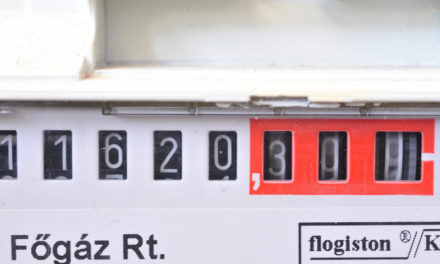According to Magyar Nemzet's analysis, since 2010, additional resources of several hundred billion forints have arrived in the neglected sector.
The left-wing governments tried to save money on health care, during the administration of Ferenc Gyurcsány, they reduced the number of beds, closed hospitals and introduced the visiting fee, reads the Magyar Nemzet article. On Sunday, Mihály Varga announced on his social media page:
In Hungary, healthcare improvements can start from HUF 64 billion, and 17 hospitals, among others, can be renovated.
The Minister of Finance reported that our country has concluded an important agreement with the Asian Infrastructure Investment Bank, through which we will receive 183 million euros, about HUF 64 billion, in favorable financing for healthcare developments.
"The amount will be used, among other things, for the renovation of 17 hospitals, laboratory improvements, test supplies, and the purchase of medical protective equipment. The source with a more favorable interest rate than the market is also due to the strengthening Hungarian-Asian relations. "Hungary is the first country to which the bank provides financing outside the Asian region," explained the head of the ministry.
In the video message, László Balogh also spoke, who spoke about the fact that Hungary must be prepared for unexpected situations, and the source ensures that the development and financing of the health care sector stands on several legs.
"The Asian Infrastructure Investment Bank is one of the most significant and youngest multilateral development banks in the world, Hungary joined this institution in June 2017," explained the Deputy State Secretary responsible for financial policy of the Ministry of Finance.
The period of left-wing governments significantly damaged the sector
According to the newspaper, the financial source announced on Sunday fits into the usual processes in recent years, but significant development of the healthcare system was not always usual, as the period of left-wing governments significantly damaged the sector. After Péter Medgyessy came to power, about 220,000 healthcare workers received an average 50 percent wage increase as part of the hundred-day program, but after that, good times followed.
After the initial spending, cuts were necessary,
and in September 2003, the Minister of Social Affairs and Health, Judit Csehák, resigned after learning about the planned figures of the 2004 budget.
In 2003, the left made an attempt to privatize hospitals, but thanks to the referendum initiated in the matter, in December 2004, it was possible to prevent the minority ownership of health institutions from being transferred to private hands. The government of Ferenc Gyurcsány, who overthrew Péter Medgyessy, was unable to provide adequate resources for the health sector, therefore in his second term
Between 2006 and 2009, several hospitals were closed to save money.
This was necessary because they significantly overspent before the parliamentary election and, as is well known, falsified the budget figures and hid the actual budget deficit from the European Union.
Reductions in the number of beds after hospital closures
In December 2006, the left-wing majority in parliament voted for a law that would have closed five hospitals and eliminated active beds in eight more. The Schöpf-Merei Hospital in the capital, the MÁV hospital in Buda, the Dialysis Center in Borsod, the Airport Hospital in Kecskemét and the State Hospital in Parádfürdő decided to close, and not long after, the National Institute of Psychiatry and Neurology also met their fate. The active beds would have been eliminated in the Bonyhád, Kapuvár, Sikszó, Várpalota, Zirci, Nagykőrös hospitals, the Sopron sanatorium, and the Szent Rókus Hospital in the capital.
Due to the huge social dissatisfaction and the protest of the medical profession, not all the planned institutions were eventually closed, but the Schöpf-Merei Ágost Hospital and Maternal Protection Center, the National Institute of Psychiatry and Neurology and the Svábhegy Children's Hospital were closed, and the Margit Hospital was merged and downgraded. the Buda Children's Hospital and Szent János Hospital.
The closure of the OPNI caused the greatest outrage, as a large number of psychiatric patients unable to support themselves became homeless because of it.
One of the most infamous measures of Ferenc Gyurcsány's administration was that in 2007 - under the name of healthcare reform - they began to drastically reduce the number of hospital beds, reducing active care from 80,000 to 71,000 beds. At the beginning of the left-wing government, there were still 79.2 hospital beds per ten thousand inhabitants in Hungary, which decreased to 71.3 by 2010.
The visit fee was abolished
In addition, the HUF 300 visit fee was introduced in February 2007, which essentially meant that healthcare was paid for. Fidesz initiated a referendum on the issue, in which a significant majority of the participating voters rejected the visiting fee, so the valid and successful referendum succeeded in abolishing the visiting fee and the daily hospital fee. During the Medgyessy-Gyurcsány-Bajnai governments, the chaos in the health sector led to
doctors left the field en masse or went to work abroad.
In total, more than three thousand doctors disappeared from the Hungarian public health system in eight years. In the year the left came to power, the number of working doctors per ten thousand inhabitants was 36.8, which Ferenc Gyurcsány managed to reduce to 34.
Material appreciation
With the coming to power of the right wing, order was also created in the health sector, thanks to which the number of doctors working in our country began to increase.
According to the data of the Central Statistical Office, in 2019 a record 41,282 doctors performed their healing work in Hungarian healthcare, and the number of doctors per ten thousand people rose to 42.3, which is eight more than when Gordon Bajnai handed over the reins of government to Viktor Orbán. The appropriate financial appreciation also contributed to the turnaround, since
Since 2010, the salary of doctors has increased two and a half times, and by 2023, a starting resident will earn HUF 687,000 gross on average.
A doctor who has been in the field for more than 41 years will be able to take home HUF 2,380,000 per month. A multi-year, comprehensive salary increase program is also underway for nurses, since 2010 their appreciation has been continuously increasing, a 60 percent salary increase was achieved, and between 2019 and 2022 another salary increase of a total of 72 percent will take place.
Investments have begun
In addition to wage increases, the national government also spends significant sums on institutional development.
More than eighty rural hospitals have been renovated since 2010, for which 500 billion forints were spent.
Currently, institutional development of the central region is taking place with a budget of 750 billion forints, which includes the super-hospital in South Buda, serving 1.2 million people.
Within the framework of the healthy Budapest program, new developments are announced on a weekly basis. Developments worth more than HUF 13 billion have been handed over in recent months alone. The Korányi Institute's nurse's dormitory was completed, the National Oncology Institute's new thoracic surgery block was handed over, the urology department was renovated at the Jahn Ferenc Hospital, improvements guaranteeing modern training conditions were completed at the University of Pécs, and the oncology radiology clinic building of the University of Debrecen and the specialist clinic in Dunakeszi were handed over. In addition, a new, world-class operating theater was built at the Jenő Manninger National Traumatology Institute, and the National Ambulance Service received twenty new ambulances.













